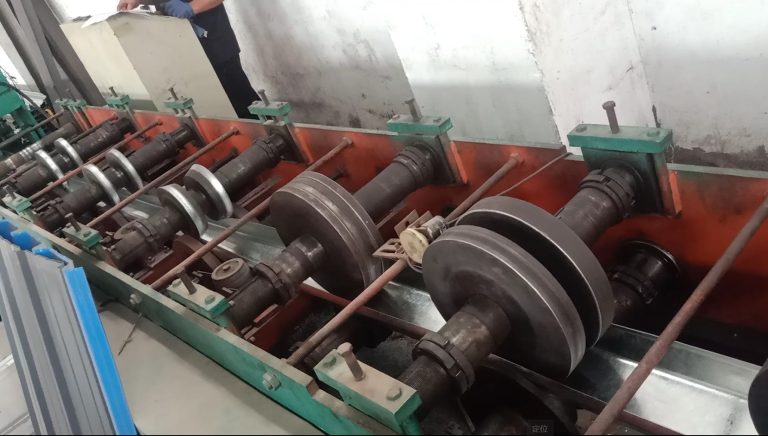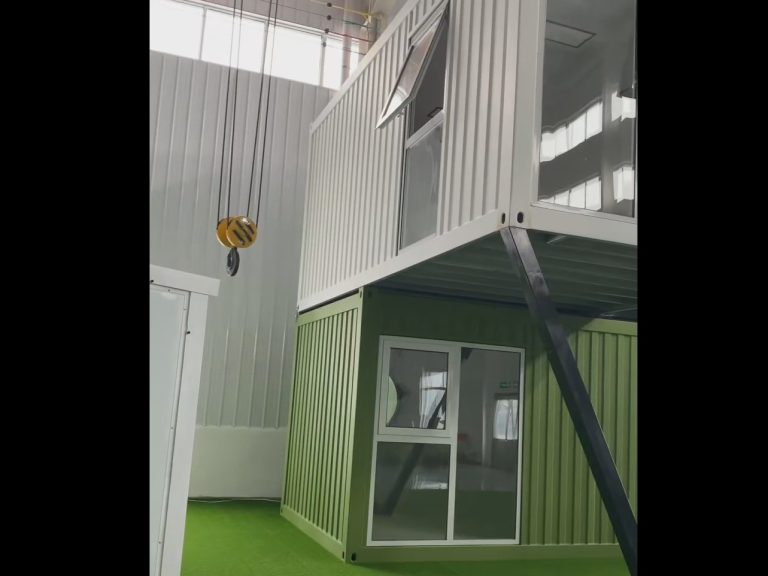Table of Contents
Advantages of Vibration Control Technology in Steel Structure Buildings
Steel structure buildings are becoming increasingly popular due to their durability, cost-effectiveness, and sustainability. However, one of the challenges associated with steel structures is their susceptibility to vibrations caused by external forces such as wind, earthquakes, and human activities. To address this issue, engineers have developed vibration control technology to enhance the performance and safety of steel structure buildings.
One of the key advantages of vibration control technology in steel structure buildings is the ability to mitigate the effects of external forces. By incorporating damping systems and vibration isolators, engineers can reduce the amplitude of vibrations and minimize the impact on the building’s occupants and contents. This is particularly important in high-rise buildings, where wind-induced vibrations can cause discomfort and even structural damage if not properly controlled.
In addition to improving occupant comfort, vibration control technology can also enhance the structural integrity of steel buildings. Excessive vibrations can lead to fatigue and stress on the building’s components, potentially compromising its long-term performance. By implementing vibration control measures, engineers can extend the lifespan of steel structures and reduce the need for costly maintenance and repairs.
Furthermore, vibration control technology can contribute to the overall sustainability of steel structure buildings. By minimizing the effects of external forces, buildings can be designed with lighter and more efficient structural systems, reducing the amount of material required for construction. This not only lowers the environmental impact of the building but also reduces construction costs and energy consumption over the building’s lifetime.
Another advantage of vibration control technology is its ability to improve the functionality of steel structure buildings. In areas prone to seismic activity, for example, base isolation systems can be used to decouple the building from the ground motion, reducing the risk of structural damage during an earthquake. This not only enhances the safety of the building but also allows for uninterrupted operation of critical facilities such as hospitals, data centers, and emergency response centers.

Moreover, vibration control technology can also benefit the performance of sensitive equipment and machinery housed within steel structure buildings. By minimizing vibrations, engineers can ensure the reliable operation of precision instruments, manufacturing processes, and research facilities, ultimately improving productivity and product quality.
In conclusion, the advantages of vibration control technology in steel structure buildings are numerous and far-reaching. By mitigating the effects of external forces, enhancing structural integrity, and improving occupant comfort, this technology has become an essential component of modern building design. As the demand for sustainable and resilient structures continues to grow, the integration of vibration control technology will play a crucial role in shaping the future of steel construction.
Implementing Vibration Control Technology in High-Rise Steel Structure Buildings
Steel structure buildings have become increasingly popular in modern construction due to their durability, strength, and versatility. However, one of the challenges faced by engineers and architects when designing high-rise steel structure buildings is controlling vibrations. Vibration control technology plays a crucial role in ensuring the safety and comfort of occupants in these structures.
Vibrations in steel structure buildings can be caused by various factors such as wind, seismic activity, machinery, and human activities. These vibrations can lead to discomfort for occupants, structural damage, and even collapse in extreme cases. To address these issues, engineers have developed advanced vibration control technologies that can be implemented in high-rise steel structure buildings.
One of the most common methods used to control vibrations in steel structure buildings is the use of damping systems. Damping systems are devices that absorb and dissipate energy from vibrations, reducing their amplitude and impact on the structure. There are several types of damping systems that can be used, including passive, semi-active, and active systems.
Passive damping systems are the simplest and most cost-effective option for vibration control in steel structure buildings. These systems typically consist of dampers or absorbers that are installed in the structure to absorb and dissipate energy from vibrations. Passive damping systems do not require any external power source and are relatively low maintenance.
Semi-active damping systems are more advanced than passive systems and offer greater control over vibrations. These systems use sensors to detect vibrations in the structure and adjust the damping properties of the devices accordingly. This allows for real-time control of vibrations and can be particularly effective in reducing the impact of dynamic loads such as wind or seismic activity.
Active damping systems are the most sophisticated option for vibration control in steel structure buildings. These systems use actuators and control algorithms to actively counteract vibrations in real-time. Active damping systems can be highly effective in reducing vibrations and can be customized to suit the specific requirements of a building.
In addition to damping systems, engineers can also incorporate other vibration control technologies into steel structure buildings. Tuned mass dampers, for example, are devices that use a mass-spring system to counteract vibrations in tall buildings. Base isolation systems can also be used to decouple the building from the ground, reducing the impact of seismic activity on the structure.
Implementing vibration control technology in high-rise steel structure buildings requires careful planning and coordination between architects, engineers, and construction teams. It is essential to consider the specific requirements of the building, including its height, location, and intended use, when selecting the appropriate vibration control technology.
In conclusion, vibration control technology plays a vital role in ensuring the safety and comfort of occupants in high-rise steel structure buildings. By implementing advanced damping systems, tuned mass dampers, and base isolation systems, engineers can effectively reduce vibrations and enhance the structural integrity of these buildings. As technology continues to advance, the future of vibration control in steel structure buildings looks promising, with new innovations and solutions on the horizon.





